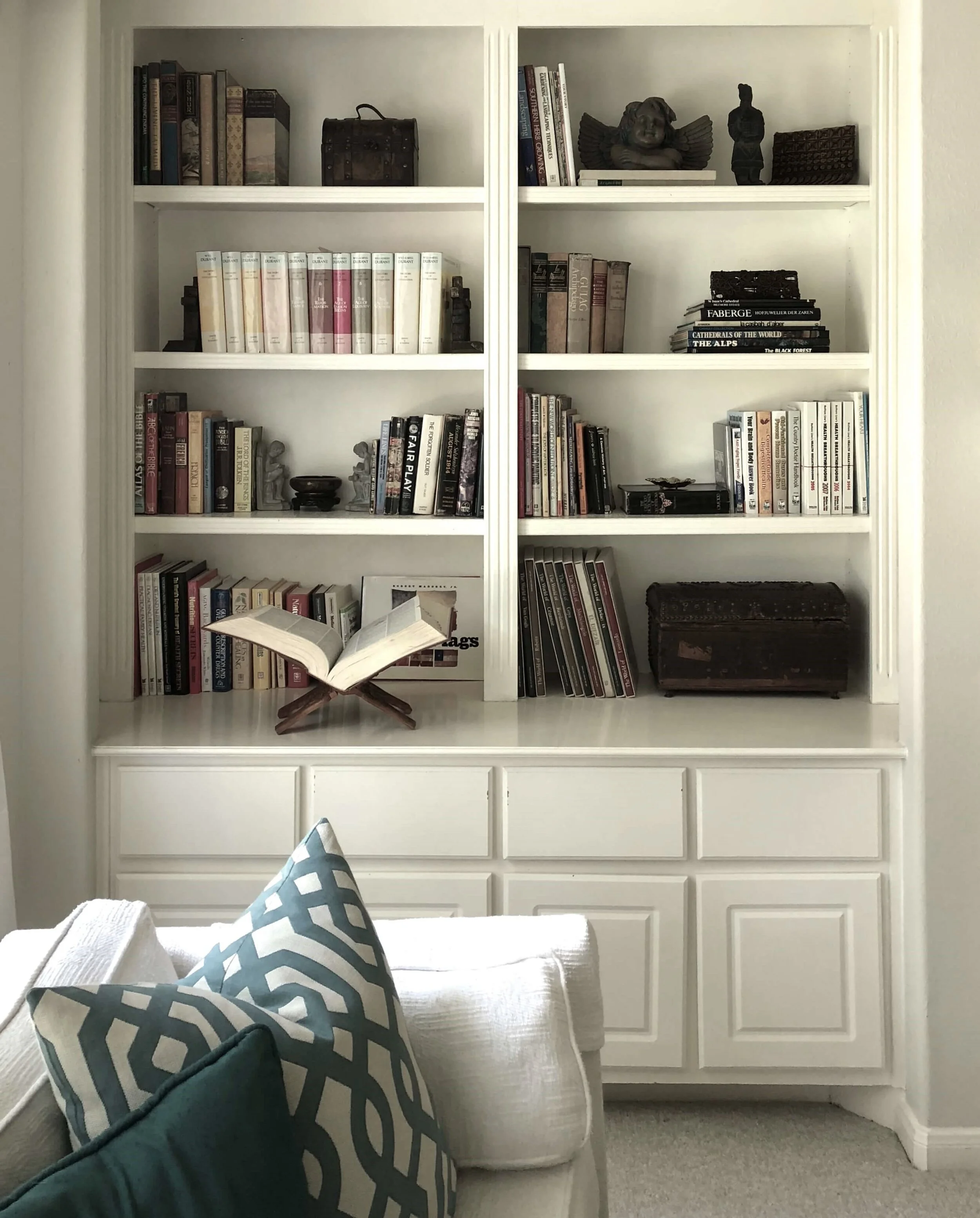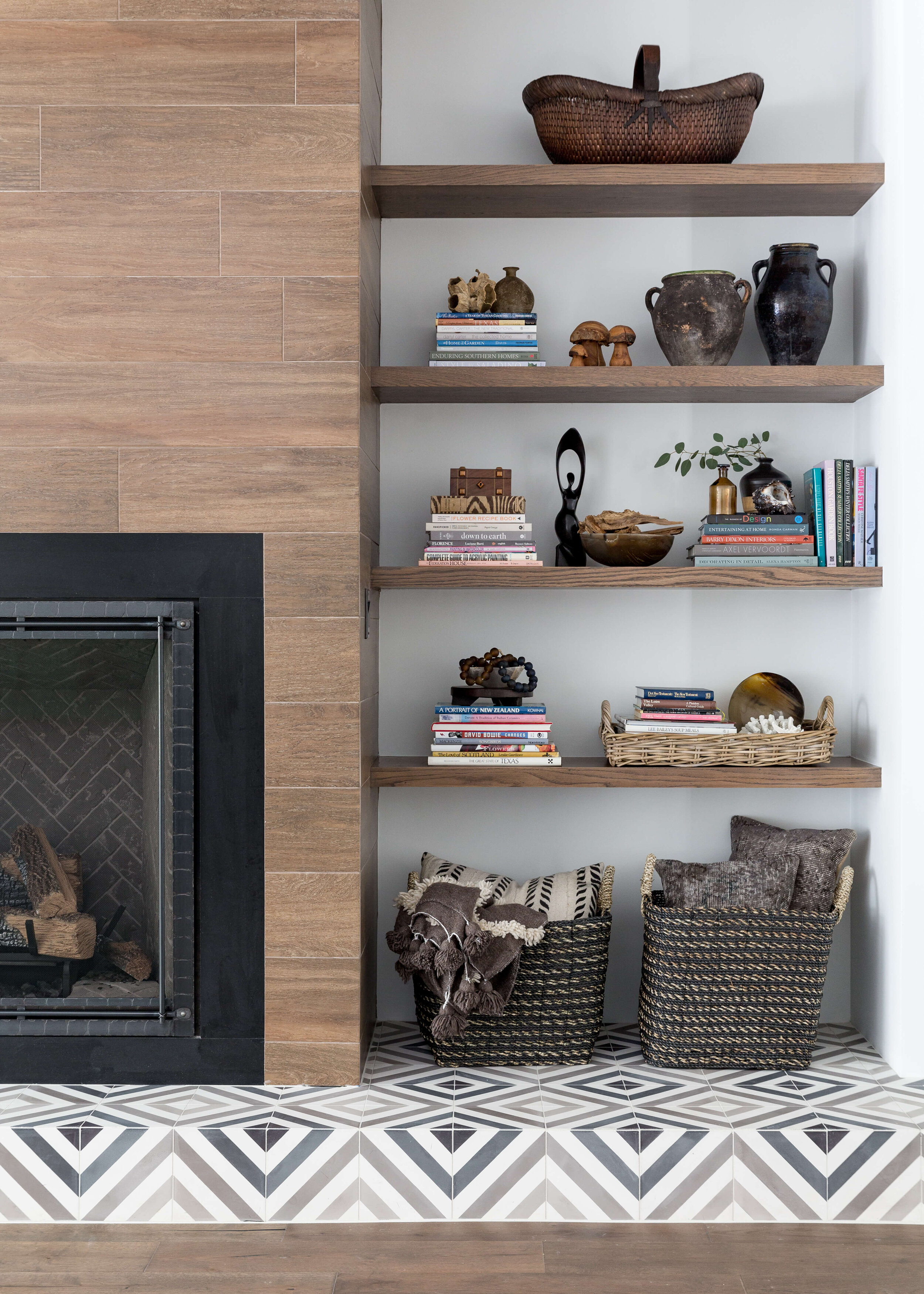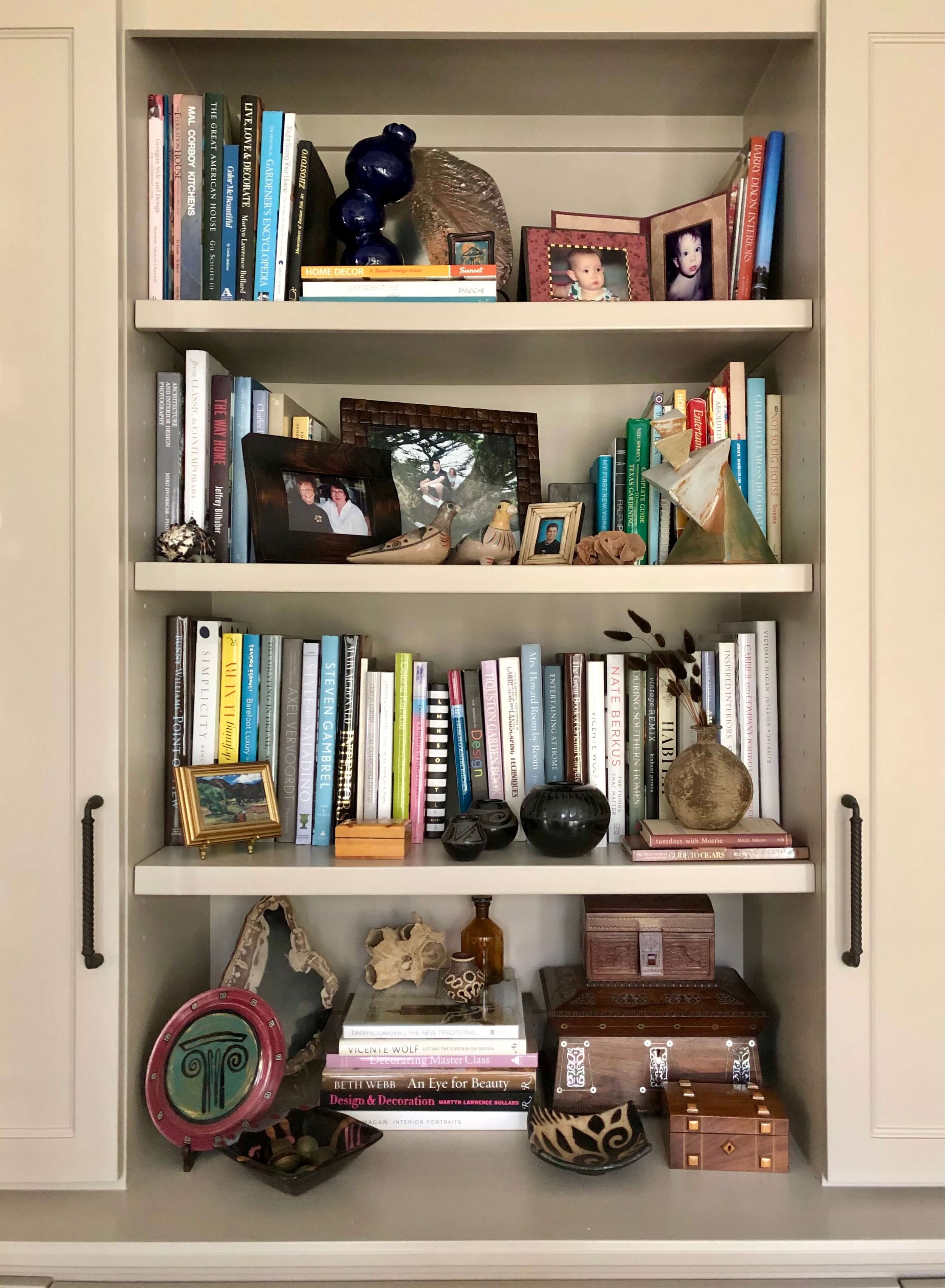Do you have some blank bookshelves that deserve to be styled?
Or maybe you have some stuff to fill them, but, you need some tips, guidance, and maybe a few more pretty objects?
I’m here to help. ;-)
I recently did some bookshelf styling on a job and thought I’d relate a few of my tips for when you attack your shelves.
I normally don’t think much about what I'm doing when styling, I just plunge in and it’s sort of trial and error. But this time I paid attention to why I was doing things the way I did, so I could relate it to you.
5 Bookshelf Styling Tips
1. Okay, this might seem obvious - use books if you have them.
Books are the perfect bookshelf filler! You can do them with or without the covers, with spines facing in or out, covered or not...whatever look works for you.
It’s just that so many of us are reading on devices these days that we just don’t own many books anymore. There is nothing more empty feeling than a home without a few books on the shelves. It just doesn’t feel like you moved in.
So buy some books by the yard; get some used books at a market, like Round Top; or buy some at a used bookstore.
Best Tip: Collect a pretty picture book from each vacation spot you visit.
In ten years it’ll be a nice collection to help recall those memories.
Millennials, you can also grab some from your parents’ house (they likely have too many) and start decorating!
Holiday Showhouse bookcase close up | Bookshelf Styling Tips
Nice composition of covered books seen at Dallas Market. If you don’t have attractive books, try covering them with interesting or colored paper to make a pretty visual statement. | Bookshelf Styling Tips
White Kitchen - Niche Bookcase, Miro Dvorscak, photographer | Carla Aston, Designer
A bookshelf styling is so much more interesting with books on the shelves. Even if you do all your reading on a device, having a collection of books reflects your interests and style. I often advise younger clients who might not have many books yet to check out their parents’ shelves. It’s likely they might need to downsize theirs and would love to hand them down. Bookshelf styling | carlaaston.com
2. Dig into your kitchen cabinets.
Plates and platters make nice accents or backdrops for objects when propped up on a plate stand. Shallow bowls are nice for displaying collected small objects.
This plate on a stand provides a nice backdrop for some interesting smaller items on the bookshelf. Bookshelf Styling | Tori Aston, photographer | Carla Aston, Designer
This open shelving at a kitchen built-in hutch has cookbooks and a grouping of plates and pitchers. It has a nice mix to keep it interesting and there is room to add little objects as time goes along.
Open shelving in a kitchen calls for some thoughtful styling with cookbooks, plates, pitchers, and other kitchen items. Colleen Scott, Photographer | Carla Aston, Designer
Shells displayed in a bowl, Bookshelf Styling | Tori Aston, photographer
3. Use big objects up high and down low.
In high, tall shelving — like I had in my showhouse room below — I used large, tall ginger jars as a mass to fill up that space. Books and small things won’t be appreciated up that high from down below, so it needs to be large and impressive.
Bookshelf styling in home office - see how the large ginger jars work well in the very tall shelf up high? | Holiday Showhouse 2015 Room | Miro Dvorscak, Photographer | Carla Aston, Designer
Large baskets were used on the top and bottom shelves of this rustic bookshelf space. Carla Aston, Designer | Colleen Scott, Photographer
A ginger jar and tall vase were used on the lower shelf of this console. Carla Aston, Designer | Colleen Scott, Photographer
4. Group objects together to create a mass.
Just like I did with the white ginger jars up high, group your objects together so that they relate. Spacing things apart can work if you’re creating a repetitious look with a long, wide shelf, but, generally, a mass or cluster is visually appealing and makes a bigger impact.
Check out this modern look with floating shelves from one of my projects. I liked the books stacked on their sides here. And we grouped the bottles together, as well as the urns and sculpture at the top to create a unified look to the grouping.
Floating bookshelf styling with books laid on their sides, stacked, and bottles and vases grouped together in a mass. | Carla Aston, Designer | Tori Aston, photographer
5. Place small objects on top of stacked books.
Laying books on their side and placing smaller objects on top of them gives the object height and importance. Now it can really be seen, and it provides a nice embellishment for the books.
Stacked books with glass bottles | Bookshelf Styling Tips | Carla Aston, Designer
I topped off stacked books with some brass knot sculpture and pieces of coral in this bookshelf styling. | Bookshelf Styling Tips | Carla Aston, Designer | Colleen Scott, Photographer
Stacked books provide a pedestal of sorts for objects within this bookshelf. Bookshelf Styling Tips | carlaaston.com
White Kitchen - Niche Bookcase, Bookshelf Styling Tips | Carla Aston, Designer | Miro Dvorscak, photographer
Bookshelf Styling Tips | carlaaston.com

















